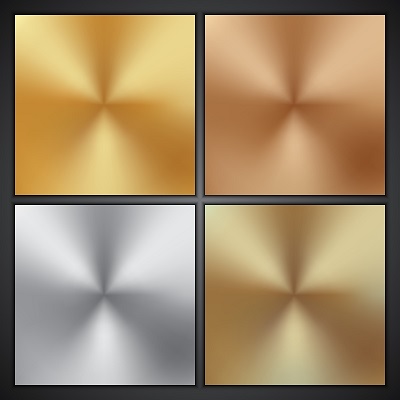If you’ve ever experienced winning third place in a contest, chances are you’re familiar with bronze. That’s what they usually call the medal or trophy they give third bests. It is used to symbolize prestige just like gold and silver. Because of this, bronze enjoys some kind of fame, which is not enjoyed by other metals of the same classification. Brass, for instance, is a metal that is in the same league as bronze in terms of properties but not as popular.
This could pose a problem to those who are buying bronze or brass metals for the first time as they can mistake one for the other. Although some of their variants look the same, they have differences that limit they use for certain applications. Here’s a quick guide to distinguishing between brass and bronze, which can help you pick the right metal for your projects.
Composition
Brass and bronze have the same base element—copper—so in a number of ways they can look and feel similar. However, their alloying elements are different—brass has zinc, while bronze has tin. Other elements are added to create variants that perform well in specific applications. For instance, bronze can be further alloyed with phosphorus, manganese, aluminum, or silicon, while brass can be alloyed with iron. In spite of the changes made in their composition, both metals preserve the qualities that are distinct to them, which is why they do not transform into completely different materials.
Color
Perhaps the best way to distinguish between brass and bronze is through their color. Brass usually has a muted yellow shade, much like dull gold, which makes it a good material for furniture and fixtures. Bronze, on the other hand, looks almost always a reddish brown. This characteristic may slightly change when other elements are added into the mixture, but it’s still easy to tell them apart.
Properties
If you really want to be sure that you’re using the right material, then there’s no better way than to test their properties. Brass is more malleable and ductile than bronze, and that’s simply because tin does a better job of pinning the copper lattice than zinc. Meaning, the lattices that make up brass can slide more freely on top of each other when the metal is rolled, pressed, or hammered. Because of this, bronze is also much more brittle than brass but it’s more durable as brass oxidizes much faster.
Applications
The main reason why bronze and brass were made is that there are many applications in which copper can’t be used for simple because it lacks certain critical properties. By combining with zinc to form brass, it becomes suitable for making musical instruments, plumbing fittings, and zippers. And by combining with tin to form bronze, it becomes a good material for making bells, ship fittings, ship propellers, submerged bearings, and weather-stripping among many others.
Knowing how to differentiate between brass and bronze will help you save huge sums of money. If you’re quite not confident with your choice, though, you can always ask for expert advice. This is why if you need metal supplies for your project, you should go to a reputable supplier. They will not only provide you with the highest quality copper & brass sales from their arsenal but they can also give you advice on what’s best for your project.
Sources:
Difference between Brass and Bronze, differencebetween.info
Why is brass more malleable than bronze?, quora.com


